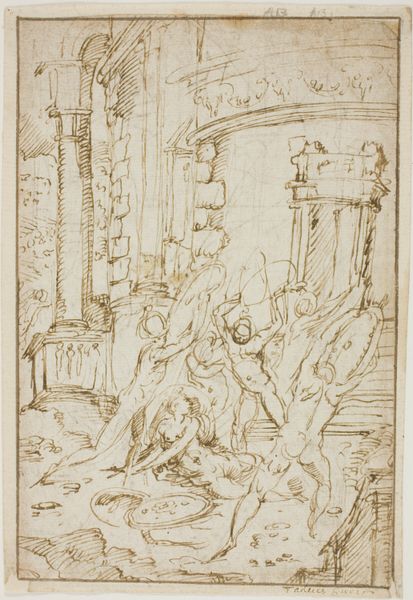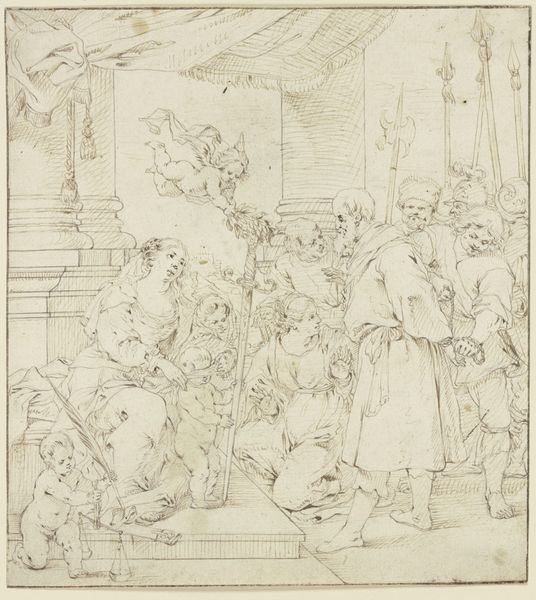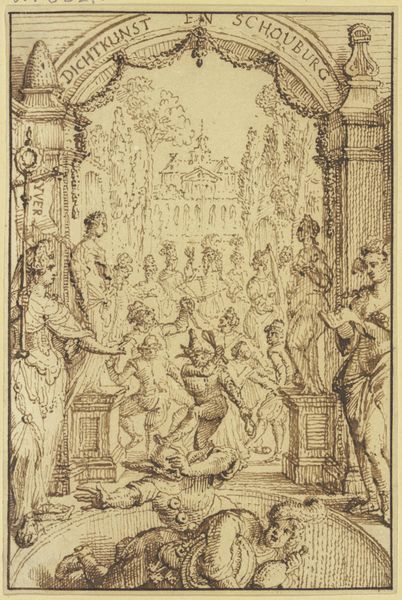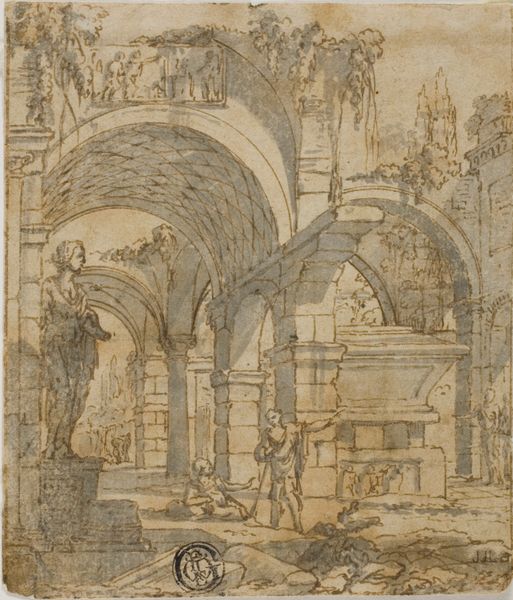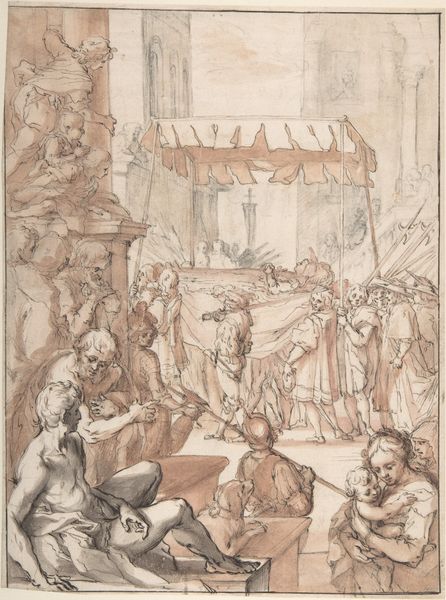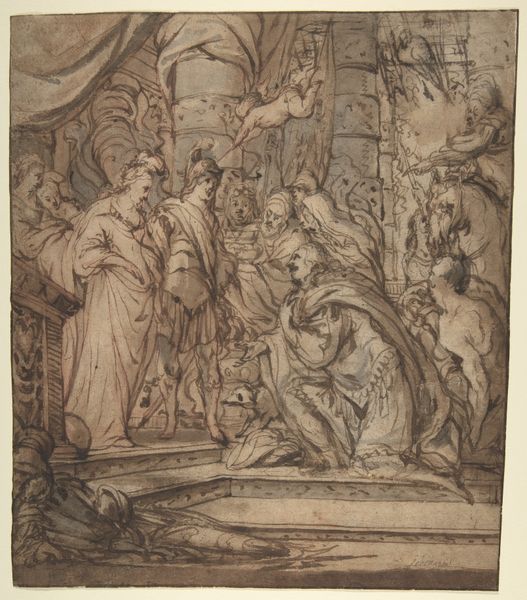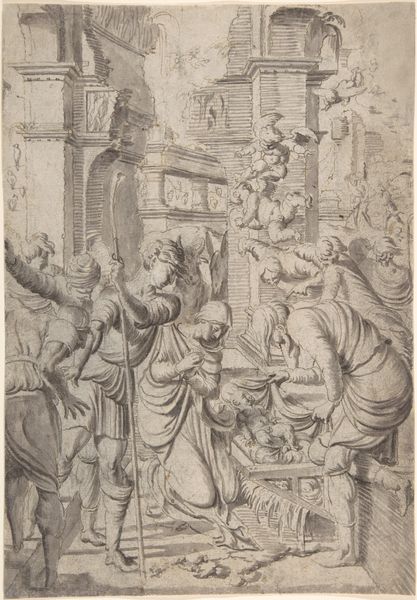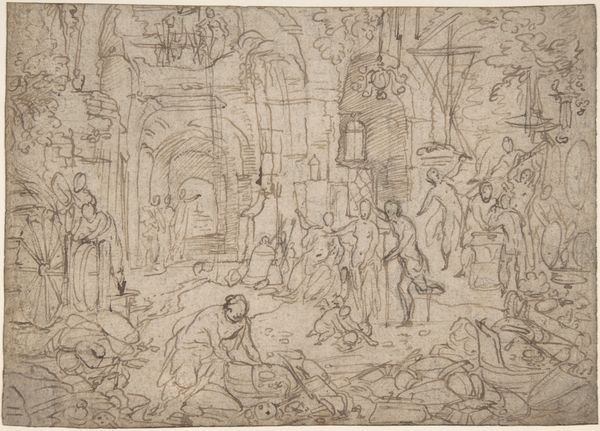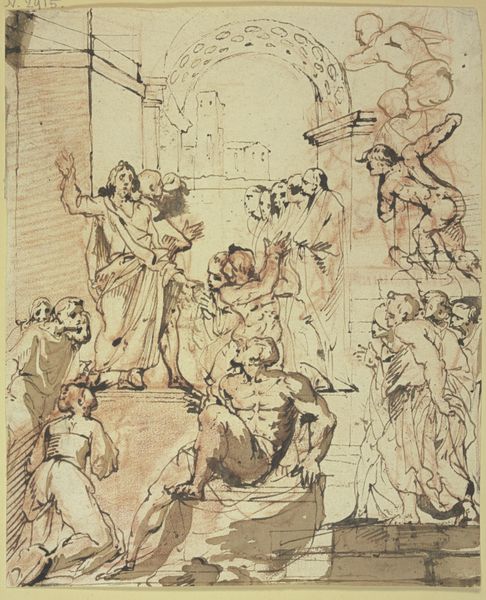
Ein Mann vor zwei kirchlichen Würdenträgern, die unter einem Baldachin sitzen
0:00
0:00
drawing, red-chalk, ink
#
drawing
#
red-chalk
#
etching
#
figuration
#
11_renaissance
#
ink
#
13_16th-century
#
cityscape
#
academic-art
Copyright: Public Domain
Editor: Here we have Andrea Boscoli’s drawing, “Ein Mann vor zwei kirchlichen Würdenträgern, die unter einem Baldachin sitzen,” rendered in red chalk and ink. It’s, well, sketchy! The lines are so active and give the whole scene this bustling, energetic feel despite its serious subject matter, wouldn’t you agree? What story do you think this piece is trying to tell? Curator: Indeed! This drawing presents an intriguing look into the power dynamics of the 16th century, particularly within the church. Consider the architecture, the cityscape serving as the stage, and the theatrical presentation. Don’t you see a deliberate construction meant to impress? Editor: I hadn't really thought of it that way, but the architectural details *are* quite prominent, framing the central interaction. How would the intended audience at the time interpret this imagery? Curator: Likely as a representation of the Church’s authority and wealth, communicated via its visual language of architecture, clothing and hierarchical seating arrangements. The placement of these figures beneath a baldachin—symbolizing power—asserts institutional authority. The drawing, circulated amongst certain viewers, potentially reinforces those power structures. Does this drawing perhaps become an instrument of control through visual means? Editor: So the drawing isn't just documenting an event, it's actively participating in the politics of that time by showcasing and maybe even promoting the Church's power? Curator: Precisely. It gives us much to consider regarding the social function of art and how institutions wield imagery to cultivate a certain kind of response. Editor: That makes me think differently about the role of art in shaping public opinion, and maybe even maintaining established power. I appreciate you showing me how socio-political influences could affect artwork during the renaissance. Curator: It's fascinating to consider isn't it? I am also now considering new potential interpretations. Thank you.
Comments
No comments
Be the first to comment and join the conversation on the ultimate creative platform.
